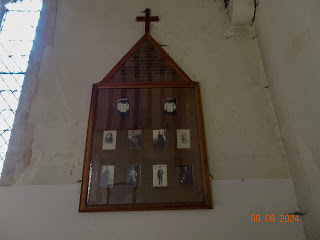The village of Chilham (Cilla's settlement) is in the valley of the Great Stour River and beside the A28 road 6 miles (10 km) southwest of Canterbury. It is centred around what is probably, the most perfect market square in Kent, where until recently, a traditional annual May Day celebration took place. It has been much used by film companies over the years. At each end of the square are its major buildings: Chilham Castle and the 15th-century parish church, dedicated to St Mary. It is believed that Thomas Becket was buried in the churchyard. The village has a number of period houses such as the former vicarage, which dates from 1742. The castle was owned by the Viscounts Massereene and Ferrard until its sale in 1997. As of 2013 it is owned by Stuart Wheeler, founder of the spread-betting firm IG Index.
It has changed hands many times, having been home to a host of colourful and sometimes eccentric families.
The house was remodelled several times, making it into a rather intriguing mix of architectural styles, ranging from Regency to Victorian Gothic, to a peculiar Victorian interpretation of the original Jacobean style
It is sometimes claimed that the 18th-century parkland at Chilham was landscaped by Capability Brown. This is not strictly true; Brown was employed at Gatton Park in Surrey, then owned by the brother of Chilham's owner, Robert Colebrooke.It seems likely that Robert Colebrooke used ideas he saw at Gatton Park, for when a later owner finally did persuade Brown to come to Chilham in 1777 the famous landscape designer said there was little to do here. Presumably, his style had already been implemented.
Apparently, the gateway to the park was designed by Inigo Jones.
The church is famous as the last known resting place of the shrine of St Augustine. When the Abbey of St Augustine in Canterbury was destroyed during the English Reformation, the gilded shrine containing the saint's body was removed from the abbey and brought to Chilham church. Here it stayed until 1541 when it disappeared. Several attempts to determine what happened to the shrine have proved unsuccessful, and its whereabouts remain a great historical mystery.
The interior of St Mary's is notable for some very fine memorials, many to members of the Digges family of Chilham Castle. The finest of these is the very grand monument to Mary Kemp, Lady Digges, who died in 1631. She was the wife of Sir Dudley Digges, who had the current Chilham Castle built beside the old Norman keep above the Stour.
The Lady Digges memorial depicts four seated muses, representing the four cardinal virtues of Patience, Justice, Temperance, and Fortitude. The virtues are seated about a tall classical column that rises to 11 feet in height.
In the north aisle is a poignant memorial depicting two children of the Hardy family, who owned the castle from 1861-1918. The unusual feature of this memorial is that there is a carved battledore and shuttlecock at the children's feet, making this the only known example in England of a church monument depicting children's toys. Originally made to stand in the castle it was presented to the church in 1919.
There is also an interesting carved and painted memorial to Lady Margaret Palmer, sister of Sir Dudley Digges. Lady Margaret died in 1619 and her flowery epitaph is worth reading
The Digges family memorial, with the family vault beneath, is located in the south-east chancel aisle. At the west end of the church is another family memorial, to the Dick family. On a wall tablet nearby is a memorial to Frederick Dick, with the intriguing inscription that he was 'shot by an unseen hand'.
Within the nave is a very worn table. This comes from the village school, which used to be located in a small chamber above the south porch. The table is much scored with the graffiti of generations of schoolboys; one carving bears the date 1733.





























No comments:
Post a Comment